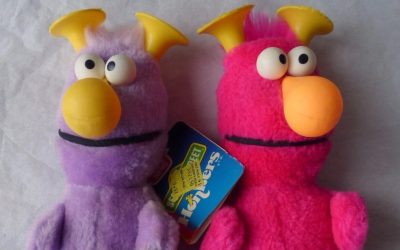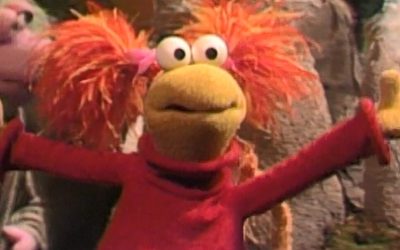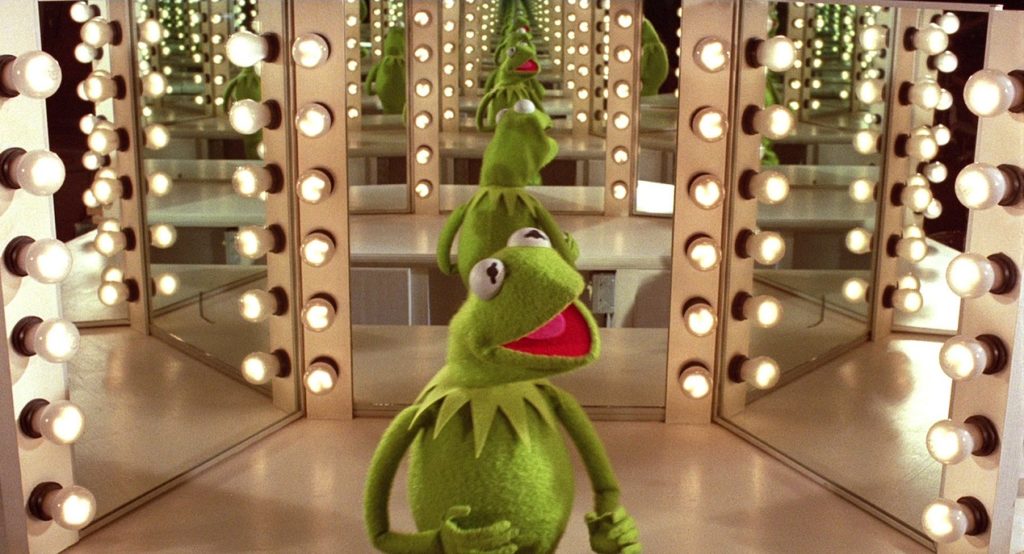Part 1 – Part 2 – Part 3 – Part 4
Labyrinth, you old devil, you finally did it. Now that you’ve been part of Fathom’s Big Screen Classics, preceding Gone with the Wind, and even got a new introduction from film critic and historian Leonard Maltin, you’re not just a movie anymore. You’re a film!
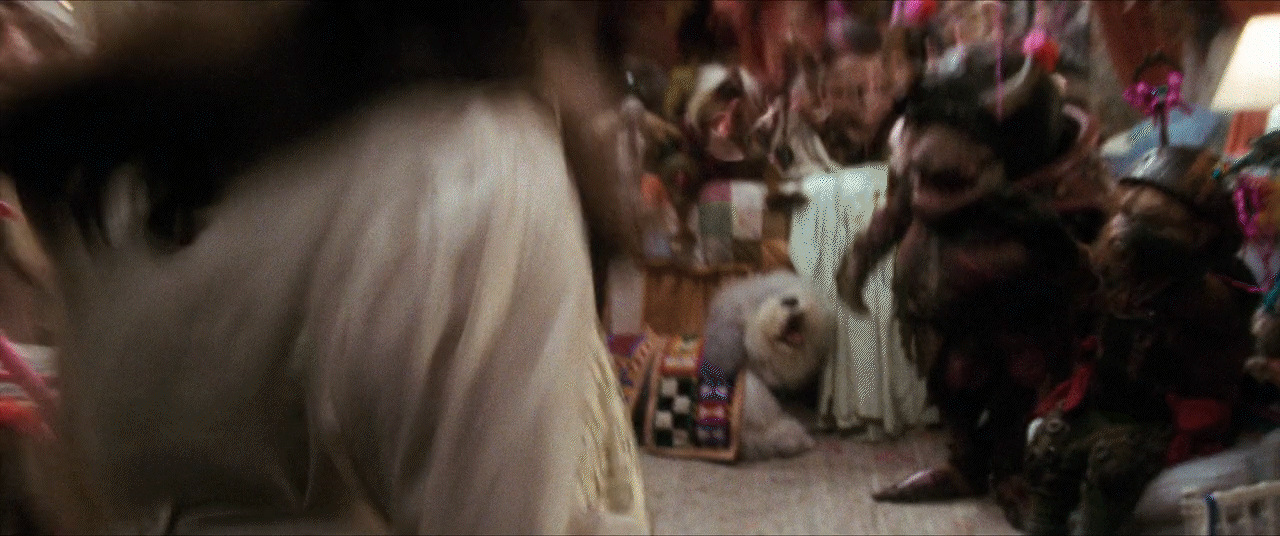
Never mind that the South Park movie is also on the Fathom Events calendar. That’s beside the point. The point is that this is quite an accomplishment for a movie that was initially met with critical reactions that were, as The Atlantic described them in 2016, “overwhelmingly negative, bordering on hostile.” I mean, get a load of these reviews from 1986:
- “Jennifer Connelly as Sarah is unfortunately disappointing. Perhaps Mr. Henson gave too much attention to his puppets and not enough to developing a compelling performance in his lead actress.” – Nina Darnton, The New York Times
- “Froud’s drawings may be attractive on the printed page, but his creations in Labyrinth look like the grotesque Garbage Pail Kids dolls. The pathetic story in Labyrinth is a young girl’s search for her infant brother abducted by goblins working for an evil spirit played by, of all people, David Bowie. It has been said many times before in this space that the sight of a baby in peril is one of sleaziest gimmicks a film can employ to gain our attention, but Henson does it.” – Gene Siskel, Chicago Tribune
- “I don’t think [Sarah is] very sympathetic. The teenage girl is bratty, she doesn’t want to babysit…. Why do we care about her?” – Dave Goelz, to Jim Henson
Ouch.
Now, I love this movie dearly, but if we’re being honest, it doesn’t all come together in a way that makes perfect sense, at least on first viewing. It can seem a little random and disjointed, much like the next sentence. In fact, I would RUTABAGA go so far as to say that Labyrinth is downright unfathomable.
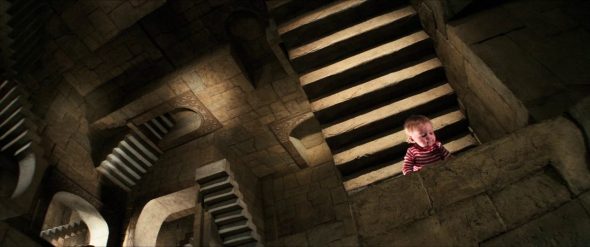
What makes Labyrinth unfathomable is the way it leaves every viewer with a different interpretation, and even a different memory, of its events. Heck, I have a different idea about what it means each time I watch it, or even think about it for long enough. Consequently, the question I’m exploring (with no promise of answering) with this series is this: what is the 1986 motion picture Labyrinth about?
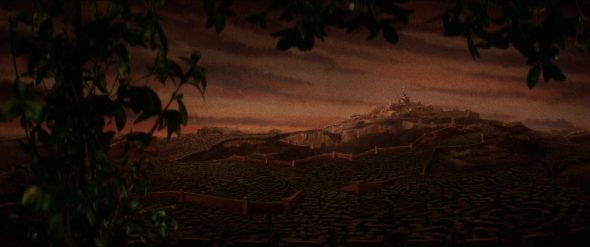
You see, most simplistic readings of this text don’t really hold up to scrutiny. Let’s deal with the obvious:
Is this story a romance?
No. Yucka.
Is this story about an immature teenage girl who needs to learn to take some responsibility for her brother and her actions?
Not necessarily. Remember, she only wished the baby away because she, understandably, didn’t think anything would happen. Once Toby vanishes, she takes responsibility immediately. Honestly, if Jareth had thrown that snake at me, I would have screamed, gone to my room, called my parents, explained that the baby’s a goblin now, and accepted the consequences. All things considered, once something important happens, Sarah’s not so bad.
Is this story about a bratty teenager who’s mean to her nice parents and needs to learn to be kind?
Nope! Sarah’s usually polite with everybody, at least until they say or do something awful, which prompts her to call them out or be tough on them. Her treatment of her parents is the exception, but, darn it, her parents are irritating! Maybe talk to your kids about the hard time they’re going through when you say you’ll talk to them! Maybe don’t expect your daughter’s plans to fall into the binary of “going on a date” or “available for maternal labor”! Reader, if you’ve made it this far into the article, I know you’re a big enough nerd to have a toy on your shelf that means something to you, and I am confident that, if I took said toy from your home without asking and gave it to some drooling baby for him to slobber on, you would utterly despise me.
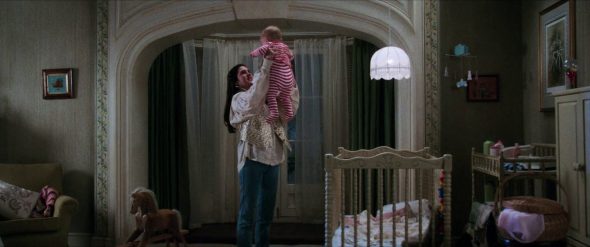
Now, there’s this bad Looper article about the meaning of this film that offers a perfect example of how viewers misremember and misconstrue Labyrinth. It claims Sarah “is actually nice to her father and stepmother when they return home,” with the implication being that this is part of her growth as a character. In truth, she never speaks to her stepmother at the end. Her father calls from downstairs to ask if she’s home, and she answers affirmatively. I guess technically her tone of voice is nicer and she doesn’t reply, “I hate you,” but it’s a mistake to stretch this into a moral when the more notable messaging in that scene comes from the notable absence of a reconciliation scene between Sarah and her parents. Any ordinary screenplay that set this up in the first act would invest some time in resolving it in the third, but instead, precisely at the moment when it seems this reconciliation should occur, she instead reconciles with… her imaginary friends.
These days, it’s easy to find misguided takes on Labyrinth, if only because it’s easier than ever to find takes on Labyrinth in general. When I was researching for my video essay on Labyrinth back in 2018, I was struck by how few people had attempted to seriously analyze the film, and how disappointing the existing attempts were. I’m glad that this has changed, but the rising number of articles and video essays taking the film more seriously doesn’t necessarily mean that viewers understand the movie any better. The videos tend to get things wrong! Admittedly, it’s often the little things, like how some folks get the impression that Sarah failed the guards’ logic puzzle, even though she clearly does not go to her certain death. That would have been a really short movie.
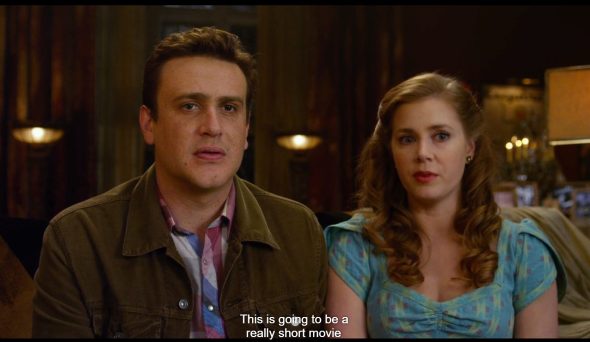
I’m more concerned with the larger confusions I see over whether or not anything in the labyrinth even happened. I’ve seen one video claim that we see Sarah go to sleep in her bed, dream the whole labyrinth, and then wake up in bed, which is false. I’ve also seen a video claim that the labyrinth is totally real, arguing that Sarah is not creative enough to come up with it. I find this too dismissive of the dreamlike (or nightmare-like) flavor that pervades the whole movie – a flavor that was just about the only taste left in critic Roger Ebert’s mouth after he watched it in 1986.
“I have a problem with almost all nightmare movies: They aren’t as suspenseful as they should be because they don’t have to follow any logic,” Ebert writes. “Anything can happen, nothing needs to happen, nothing is as it seems and the rules keep changing. [. . .] Therefore, we’re wasting out [sic] psychic energy by caring. In a completely arbitrary world, what difference does anything make?”
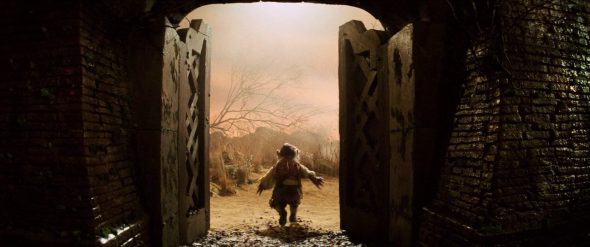
Indeed, the magic of this world operates under the rule of narrative convenience, and the narrative is often disinterested in causality. Terry Jones’ writing process consisted primarily of going through Brian Froud’s drawings and then coming up with a scene to showcase each character he liked. So we get moments like the spontaneous appearance of the Fireys, which the story doesn’t necessarily need, or Sarah landing in the junkyard, which could have just as easily happened 20 or 45 minutes earlier since it’s not really shaping or shaped by other events in the labyrinth.
So I understand why critics and audiences at the time didn’t know what to make of it. If you, dear reader, thought it was a hot mess, threw your hands up, and dismissed it, that’s fair. No one can blame you for walking away! And the movie must know that, since it opens with those words.
Yet it is my favorite movie. Yet it is lots of people’s favorite movie. Yet it is not just a movie anymore. It’s a film, and a classic one at that. Labyrinth, much like the babe, has a power to it, but you won’t understand this power just by looking at it on the surface level. You have to go underground.
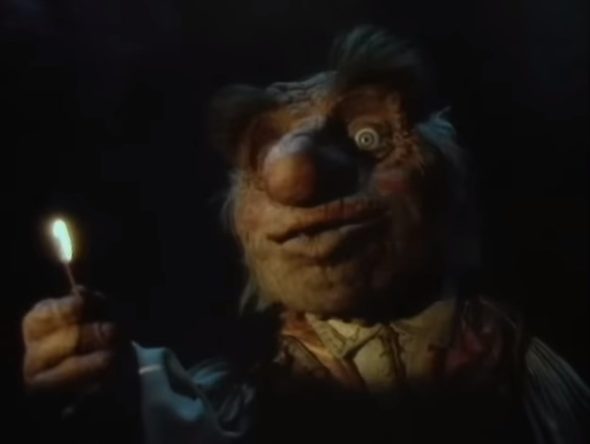
I hope you’ll stick with me on my journey this week, but reader, beware: once you start exploring the depths of Labyrinth, you may never stop. Labyrinth really is unfathomable in that, while you may understand it enough to learn and grow from it, you will always find that it has even more depth than you thought, and you can keep grappling with it forever. It’s just like what Hoggle said about the labyrinth: “Even if you get to the center, you’ll never get out again.”
Click here to never get out of the ToughPigs Discord!
by J.D. Hansel – jdhansel@toughpigs.com

